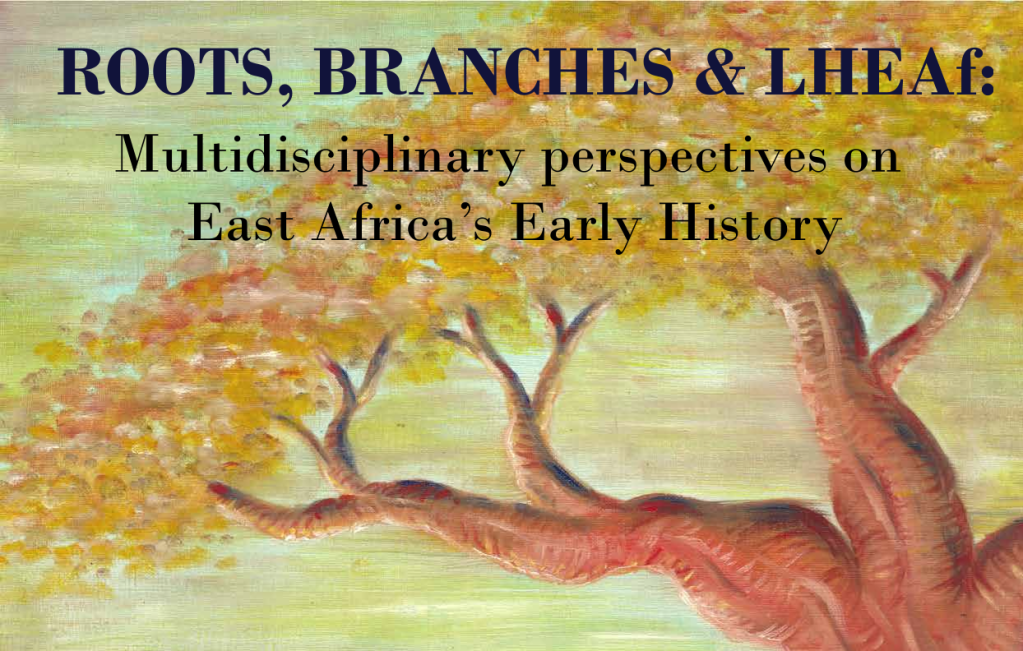6-8 June 2024 in Leiden

About
This conference is about the early history of East African people, their languages and cultures, concluding the Leiden project on the Linguistic History of East Africa (cf. main results below). Aiming to correlate our linguistic findings with those of other disciplines, the conference is interdisciplinary and invites researchers from fields such as archaeology, anthropology, history and genetics in addition to linguistics.
There will be ample time for discussion: We will have presentations of 20 minutes with 20 minutes discussions. All sessions will be plenary. The conference is in-person, but on-line attendance for presenters will be facilitated if necessary. Abstract submission deadline was 15 January 2024. For more information about attending the conference without presenting, see here.
We hope to discuss questions such as:
- Were the people of earlier Savanna Pastoral Neolithic sites relatives of the current hunter-gatherers, if there were no Cushitic languages in Tanzania before 1000 years ago?
- Through which routes did the Bantu peoples enter Kenya-Tanzania?
- What were the major cultural revolutions in the last 2000 years and how did they come about?
- What were the mechanisms and constellations of contact and exchange?
Download the conference poster here.
Registration for guests
You are welcome to join the conference in person without presenting. Attendance is free. Please register here before 31 May.
Project outcomes: Main results
We re-assessed the position of South Cushitic within Cushitic, given the controversy whether it should be considered as part of East Cushitic or not. We conclude that South Cushitic is not part of East Cushitic but higher in the Cushitic historical tree. This suggests an early move of South Cushitic speaking people from Ethiopia southwards [1]. The apparent East Cushitic properties in proto South Cushitic are due to East Cushitic influence, in particular from Oromo and, earlier, from a precursor of the Yaaku-Dullay languages (Kiessling, Mous, Rapold in prep.; Mous 2023c). This suggests a late entry of South Cushitic into Tanzania given the fact that the separation of Oromo is an event that occurred less than 1000 years ago. There is no linguistic evidence for Cushitic speakers in Tanzania before 1000 BP [2]. Apart from linguistic contact with Yaaku-Dullay and Oromo, proto South Cushitic was also in contact with proto-Kalenjin (Mous in prep.). South Nilotic (Kalenjin and Datooga) and Cushitic have had intense contact at several points in time to an extent that it seems futile to distinguish cultures on the basis of language families: proto OmoTana East Cushitic influenced proto South Nilotic to the extent that all decimal numbers were taken from Cushitic; in addition, there was some influence of West OmoTana East Cushitic on proto South Nilotic; East OmoTana had influence on proto Kalenjin (Mous and Rapold 2023). The geography of these contacts remain to be established. The linguistic evidence to establish the pathway of South Cushitic into Tanzania is inconclusive; partly because we consider Aasáx not closely related to the core of South Cushitic (Kruijsdijk 2023 , Mous 2023a), because earlier research established that Ma’á is not South Cushitic but a register to a Bantu language and the oldest layer in this register is East Cushitic (Mous 2001), rendering a eastern route uncertain. We try to reach insight into this spread and the spread of Bantu languages into East Africa by careful reconsideration of the many Cushitic+Nilotic loans (in particular in the area of animal husbandry) that have entered different groups of Bantu languages at different points in time and place (Mous 2023b, Taita working group in prep.). East Cushitic loans can be diagnosed with greater precision based on a revised and expanded reconstruction of proto OmoTana (Sosal in prep). We hope to address the (historical-linguistically) most challenging issue at the conference: the early presence of languages that are not Bantu, Cushitic, Nilotic in East Africa. We are working on a map (Loviscach in prep) to present the overwhelming multitude of hunter-gatherer groups and of memories of prior inhabitants. Linguists tend to hypothesise language shift for these hunter-gatherer groups where anthropologists and historians suggest change of food production. We are looking forward to discussing the dynamics and nature of such groups both linguistically and culturally. The contact situation between Sandawe, Hadza and Cushitic suggests a balanced relationship of mutual influence. References can be found here.
[1] Indications such as Ethiopia, Kenya, Tanzania are meant to be fuzzy approximations of a geographical area.
[2] Historical linguistics does not offer absolute dating. Time indications require external evidence.

